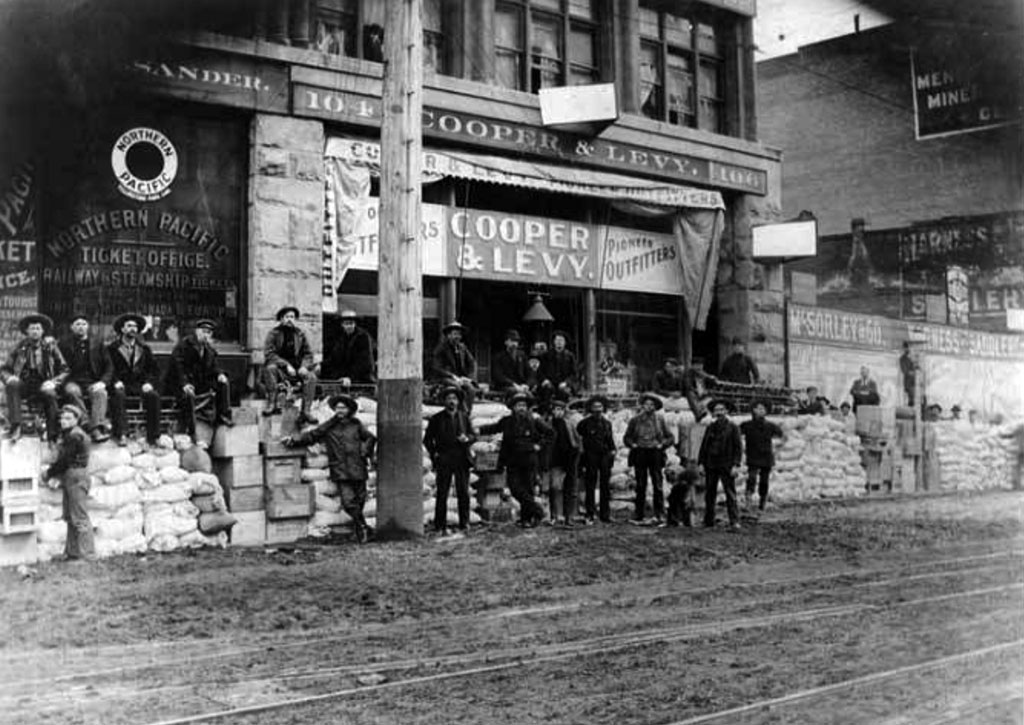-
Klondike Gold Rush National Historical Park
319 2nd Avenue S
319 2nd Avenue S
On July 17, 1897, the steamship Portland arrived in Seattle from Alaska with 68 miners and a cargo of “more than a ton of solid gold” from the banks of the Klondike River in Canada’s Yukon Territory. Its arrival triggered a stampede of prospectors, and transformed the city into the “Gateway to Alaska.” Less than 10 days after the Portland‘s arrival, more than 1,500 people booked passage to Alaska hoping to become rich. Tens of thousands more followed during the next two years, and Seattle reaped the benefits for more than a decade.
Not only was Seattle a transfer point, but it became the primary supply depot for the gold rush. The Canadian government required prospectors to carry the proper equipment and supplies, and Seattle merchants were more than happy to sell them what they needed. Shipbuilding received a boost, too, as vessels were needed to transport the miners north. One could argue that this model has persisted to the present. Consider Amazon’s provisioning of American households.
The city was also the threshold for the return trip. Successful sourdoughs were soon trading in their gold dust and nuggets for cash and spending it throughout the city, as well as the state. By the end of the century, assayers in Seattle had exchanged more than $18 million in gold. The boom times allowed Seattle to transform from a Wild West town into a fledgling metropolis (growing from 42,000 in 1890 to 80,700 in 1900 to 237,000 in 1910), though the growth added little diversity as most of the fortune seekers were Euro-Americans.
The Gold Rush was a classic example of Seattle’s long history of boom/bust cycles. Prior to the Klondike, Seattle’s socioeconomic picture was dire because of the nationwide Panic of 1893. But the city’s economy exploded after the Gold Rush, only to shrink again when the dust settled.
Walk west on S Jackson Street two block to the southwest corner of First Avenue and the Schwabacher Building.





